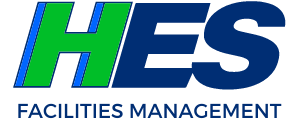As we head back to school after the holidays, we’re reviewing our best practices for snow and ice removal. The educational facilities we work with count on HES to prepare for inclement weather long before a snowstorm arrives. To do this, we focus on having the right people and the right equipment in place so when the first flakes fall, we’re ready to put plans into action.
Check out our list of best practices, to see if your facilities management company is taking the right steps for snow removal and ice management. If they’re not, our team is always ready to help!
Check in with your facilities provider
For school administrators, this is a great time to talk with your facilities management team to confirm the responsibilities, timing, and expectations that are outlined in your contract.
An increasing number of schools are equipped for online classes, so the traditional snow day may be less common for students – but that doesn’t mean your facilities management provider will take the day off. Just the opposite! Preparing your grounds for the return of in-person classes after a storm is a big job that requires immediate, thoughtful action.
An expert facilities provider will equip its onsite team with the right personal protective equipment (PPE), tools, equipment, and supplies for safe snow and ice removal. These supplies should be environmentally safe whenever possible, minimizing any impact on surfaces or plants on your campus.
The right provider also will be certified by the Accredited Snow Contractors Association (ASCA). ASCA provides training and resources that help companies document their work, improve standards, and reduce risk.
Because winter weather is unpredictable, most of all you need a facility services team that can stay flexible and responsive to your needs, keeping your school grounds safer without gaps in service. Choose a team that values clear, constant communication and has a reputation for proactive management.
Complete a pre-season assessment
You’ve established your expectations. This means it’s time for your facilities management professionals to conduct a pre-season walkthrough. There’s a good chance they already know your grounds from top to bottom, but taking time to review the property through the “snow and ice management lens” will make everything go more smoothly when a storm arrives.
Make sure your walkthrough includes all areas of your school grounds, including loading and unloading areas, parking lots, outbuildings, and emergency exits. Your team will check for any potential hazards or areas that are likely to need extra attention, such as storm drains. A thorough walkthrough now can prevent emergency repairs later on, saving your school time and money.
Facilities management pros know what to look for, and should make a note of any and all of the following:
- Exterior walkways: Should be even, clear surfaces, free of tripping hazards
- Parking areas: Like walkways, parking lots should be in good repair and clear of any debris, with proper drainage
- Outdoor steps and stairs: Should be in good condition, non-slip, with secure railings
- Landscaping: Vulnerable shrubs or plantings should be protected by wrapping them or installing barriers that prevent damage from plows or heavy snow
- Storm drains: Any drainage channel should drain away from high-traffic areas and receive regular cleaning, to prevent ice buildup on sidewalks or parking lots
- Storage areas: It’s simple, but important. Maintenance teams should know what equipment is on site, where it’s stored, and who has access to it, so there’s no scrambling when the time comes
Prepare classrooms and other student areas
Creating a clean, warm learning environment is crucial during the winter. It says to students, staff, and the entire community that your educational facilities are ready to welcome them in, leaving bad weather at the door.
The best preparation for cold weather includes any required inspection, cleaning, and repair of boilers, heating systems, and other HVAC equipment. Ideally, all this is done in the off-season, but ongoing checks will be necessary throughout the winter.
It’s also especially important that pipes are properly insulated and that any plumbing leaks, no matter how small, are repaired ASAP. The effort your facilities team makes ahead of time can prevent minor issues from becoming major ones.
And finally, keeping floors and carpets clean and dry (as much as possible) creates a safer and more attractive space. Your facilities team should be prepared to put extra energy into main entrances and hallways, keeping sand, salt, and water off the floors, minimizing the risk of slips and falls.
While these processes and systems remain largely unseen by students and staff, they make all the difference. And, as we know, the best facilities programs are the ones you don’t really notice – everything just works as it should!
Work with facilities management experts
How does your facilities management program measure up? If you’re seeking an experienced team that specializes in educational facilities management, reach out to us. We’re ready to talk about snow and ice management. Contact us at info@hes.com.
Disclaimer
The illustrations, instructions, and principles contained in this website are general in scope and for marketing purposes. We assume no responsibility for: managing or controlling customer activities, implementing any recommended measures, or identifying all potential hazards.

